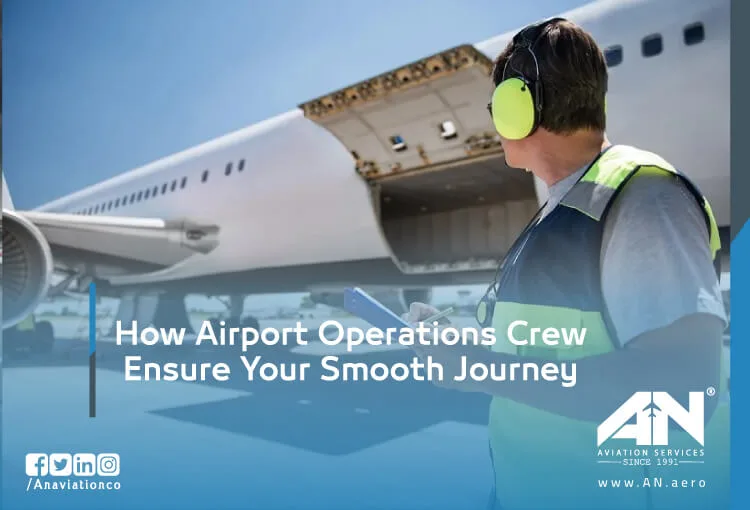
Imagine a world of personalized air travel, where schedules bend to your needs and destinations are limited only by your imagination. This is the world of charter aircraft, offering a seamless and exclusive travel experience. But have you ever wondered what happens behind the scenes at a busy airport when a charter flight takes off?
Unlike their commercial counterparts, charter aircraft operate on a different playing field. They utilize dedicated terminals known as Fixed Base Operators (FBOs), tucked away from the hustle and bustle of the main passenger terminal. These havens of tranquility offer a sense of privacy and exclusivity, allowing passengers to relax and enjoy personalized service.
WHAT ARE AIRPORT OPERATIONS?
Airport operations encompass all the activities and processes that happen within an airport to ensure smooth and safe air travel. It’s a complex and dynamic system involving various stakeholders working in tandem to keep things moving.
Think of an airport like a bustling city, with different departments working together to achieve a common goal, efficient and safe passage for passengers and cargo. Here’s a breakdown of the key areas:
- Airside Operations: This refers to everything that happens on the airfield, from aircraft movements to ground handling services.
- Landside Operations: This encompasses everything that happens inside the airport terminal, from check-in to baggage claim.
- Information Management: Seamless communication is crucial for airport operations.
- Safety and Security: Airport operations prioritize the safety and security of everyone on the airport grounds.
- Collaboration is Key: Effective airport operations require close collaboration between various stakeholders.
- A Dynamic and Evolving System: Airport operations are constantly evolving to meet changing needs and technological advancements.
WHAT ARE THE MAIN AREAS OF THE AIRPORT OPERATION?
Modern airports are complex organisms, buzzing with activity and requiring meticulous coordination. To keep the air travel machine running smoothly, several key areas work together seamlessly. These can be broadly categorized into main areas:
LANDSIDE OPERATIONS:
- Passenger Services: This includes check-in, ticketing, baggage handling, customer service, and boarding procedures. It ensures a smooth and efficient passenger flow through the terminal.
- Retail and Concessions: Food courts, shops, and other businesses provide essential services and amenities to passengers, generating revenue for the airport and enhancing the travel experience.
- Airport Security: Ensuring the safety of passengers and staff is paramount. Airport security employs various technologies and personnel to screen passengers and baggage for prohibited items.
- Terminal Maintenance: Maintaining the terminal’s cleanliness, functionality, and safety is crucial for a positive passenger experience. This includes regular cleaning, repairs, and upkeep of facilities.
- Transportation Services: Ground transportation like taxis, buses, car rentals, and even airport shuttles provide passengers with convenient options to reach their destinations.
AIRSIDE OPERATIONS:
- Air Traffic Control: Overseeing the safe and orderly movement of aircraft in the airspace around the airport, this crucial function ensures collision avoidance and smooth flight paths.
- Ground Handling: Fueling aircraft, loading and unloading cargo, providing maintenance support, and assisting passengers with boarding and deboarding are all crucial ground handling activities.
- Runway and Taxiway Maintenance: Keeping these critical surfaces in good condition is essential for safe aircraft operations. Regular inspections, repairs, and resurfacing are crucial.
- Aircraft Maintenance: Ensuring all aircraft comply with safety regulations and are airworthy requires a team of skilled professionals who perform regular inspections and maintenance procedures.
- Airport Rescue and Fire Fighting (ARFF): Trained and equipped professionals stand ready to respond to emergencies on the airfield, ensuring the safety of passengers, crew, and aircraft.
INFORMATION MANAGEMENT:
- Flight Information Display Systems: Real-time updates on flight schedules, gate changes, and other vital information are provided to passengers through digital displays throughout the airport.
- Air Traffic Control Systems: A sophisticated network of communication systems allows air traffic controllers to communicate with pilots and share critical information about aircraft movements.
- Baggage Handling Systems: Tracking and routing luggage efficiently through a complex network of conveyors and sorting machines ensures luggage arrives at the right destination on time.
SAFETY AND SECURITY:
- Adherence to Regulations: Airports must comply with stringent safety regulations set by international and national aviation authorities. Regular audits and inspections ensure compliance.
- Emergency Preparedness: Airports prepare for various emergencies, including fire, medical incidents, and security threats, through regular drills and training for personnel.
- Technology: Advanced security technology like X-ray scanners, metal detectors, and video surveillance systems are employed to detect and prevent security threats.
- Collaboration: Effective airport operations require close cooperation between various stakeholders, including airlines, air traffic controllers, ground handling agents, security agencies, and airport authorities.
WHAT ARE THE DIFFERENT TYPES OF AIR OPERATIONS?
The world of aviation is diverse, encompassing various types of air operations catering to different needs and purposes. Let’s explore some of the most common categories:
- Commercial Air Transport: This includes scheduled passenger flights, charter flights, and specialized operations like cargo transport and medical evacuation.
- General Aviation: This encompasses private flying for recreational and business purposes, flight training, aerial work like crop dusting and surveys, and air ambulance services.
- Military Aviation: This covers air combat operations, military transport, reconnaissance and surveillance, and search and rescue missions.
WHAT IS CHARTER AIRCRAFT AIRPORT OPERATIONS?
Charter aircraft airport operations involve a delicate dance between several key players, each contributing to a seamless and safe journey. These include:
- Charter Operator: The central conductor, coordinating with airport authorities, air traffic control, and ground handling agents. This involves obtaining permits, scheduling ground services, and ensuring compliance with regulations.
- Airport Authorities: Responsible for managing the overall operations of the airport, overseeing safety and security, and allocating resources.
- Air Traffic Control: The guardians of the airspace, directing aircraft movements and ensuring safe separation between flights.
- Ground Handling Agents: The unseen heroes, responsible for fueling the aircraft, handling baggage, and assisting passengers with boarding and deboarding.
- Security Services: The watchful eyes, safeguarding the airport and aircraft from security threats through thorough screening procedures.

